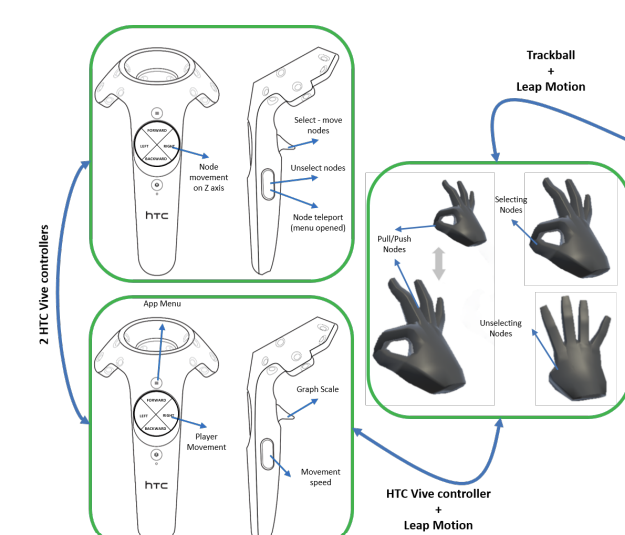Evaluation of Virtual Reality Interaction Techniques: the case of 3D Graph
PubDate: Feb 2023
Teams: University of Basilicata;University of Salerno;Kennesaw State University
Writers: Nicola Capece, Ugo Erra, Delfina Malandrino, Max M. North, Monica Gruosso
PDF: Evaluation of Virtual Reality Interaction Techniques: the case of 3D Graph

Abstract
The virtual reality (VR) and human-computer interaction (HCI) combination has radically changed the way users approach a virtual environment, increasing the feeling of VR immersion, and improving the user experience and usability. The evolution of these two technologies led to the focus on VR locomotion and interaction. Locomotion is generally controller-based, but today hand gesture recognition methods were also used for this purpose. However, hand gestures can be stressful for the user who has to keep the gesture activation for a long time to ensure locomotion, especially continuously. Likewise, in Head Mounted Display (HMD)-based virtual environment or Spherical-based system, the use of classic controllers for the 3D scene interaction could be unnatural for the user compared to using hand gestures such \eg pinching to grab 3D objects. To address these issues, we propose a user study comparing the use of the classic controllers (six-degree-of-freedom (6-DOF) or trackballs) in HMD and spherical-based systems, and the hand tracking and gestures in both VR immersive modes. In particular, we focused on the possible differences between spherical-based systems and HMD in terms of the level of immersion perceived by the user, the mode of user interaction (controller and hands), on the reaction of users concerning usefulness, easiness, and behavioral intention to use.

